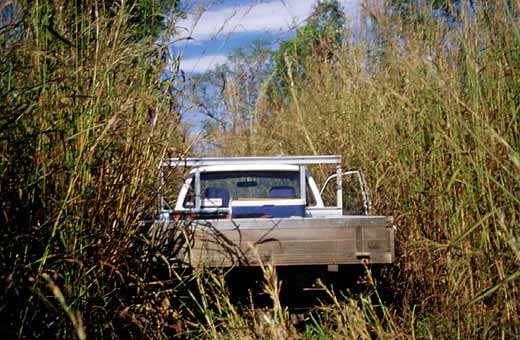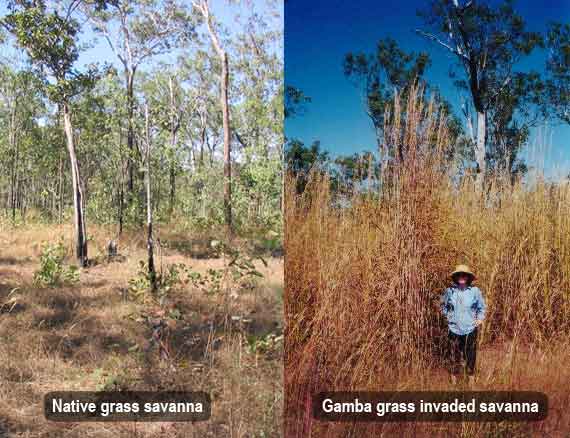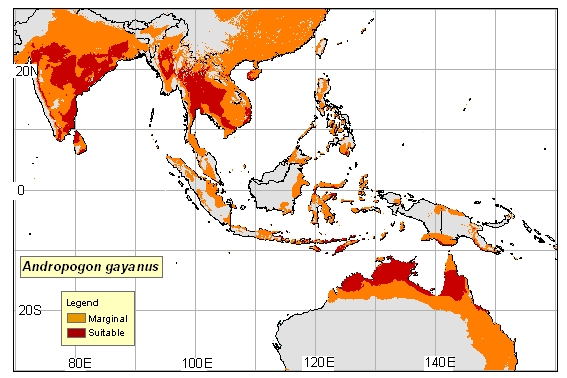The Case Studies - Gamba Grass
Taxonomic Name: Andropogon gayanus
Common Names: Gamba Grass
Ecological Category: Plant
Main impacts: Environmental

Gamba Grass. Image courtesy of Dr Samantha Setterfield
Description
Gamba grass (Andropogon gayanus Kunth.) was introduced to Northern Australia from Africa in the 1930s as a pasture grass species. It is now recognised as a environmental weed in the Northern Territory, Queensland and Western Australia.
Gamba grass is a highly invasive perennial grass, with individual tussocks growing up to 4m high and almost 1 m wide. It grows vigorously and displaces native plant species.
Gamba grass is emerging as a significant threat for a range of land users in Northern Australia including conservation, Aboriginal, pastoral mining and defence land users.

Note: photos taken 100m apart. Image courtesy of Natalie Rossiter-Rachor
Habitat
Gamba grass is broadly suited to areas with an annual rainfall above 600mm, experiencing a 3-6 month dry season. In the Northern Territory this equates to most areas north of Daly Waters. The specific habitats that gamba grass is found in include savanna woodlands, wetland margins, rainforest margins and riparian corridors. It is also found in disturbed areas and roadsides.
Current Distribution
Gamba grass now occurs from Cape York (in Queensland), across the Northern Territory, to the Kimberly (in WA) (See potential distribution map). In the NT it covers an area of approximately 1.5 million hectares, but has it has been predicted that it could potentially eventually invade up to 38 million hectares.

Distribution of Andropogon gayanus
Dispersal / Reproduction
Gamba grass spreads rapidly from seed, which is primarily spread by the wind, or by accidental spread via humans. Seeds are commonly spread along roadsides by vehicles, for example in mud and on radiators, as well as slashers and graders.
In the past this species has also been intentionally spread as a pasture species for cattle production. However, gamba grass is now a declared weed in all of the northern states of Australia, which means that it can no longer be planted or moved.
Impacts
Gamba grass grows rapidly to form tussocks which are bigger, taller and more dense than native grass species (See photos 1 & 2). These tussocks cure (dry off) late in the dry season creating an unnaturally high fuel load, which can result in late and intense fires.
Gamba grass represents a major threat to native ecosystems by dramatically altering fire regimes, reducing tree cover, and threatening plant and animal biodiversity. In addition to its threat to native ecosystems, gamba grass also poses a significant risk to human life and property in areas it invades, because it dramatically increases the likelihood of severe fire.